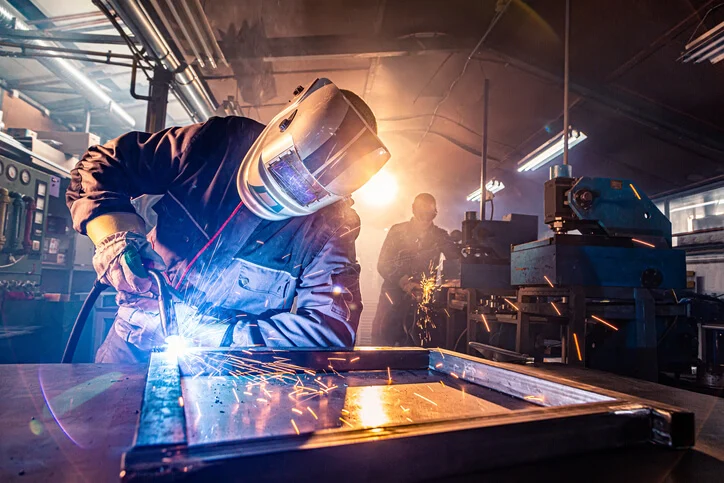Welding on the go requires specialized tools and equipment to ensure efficiency and safety. A mobile welding setup must be equipped with everything necessary for different job sites. From power sources to protective gear, having the right tools makes a significant difference. Whether working on remote construction sites or offering emergency repairs, preparation is key.
Power Source
A reliable power source is the foundation of any mobile welding rig. Generators and inverters are commonly used to provide stable electricity. The choice depends on the type of welding being done and the location. Diesel-powered generators are popular due to their durability and ability to handle heavy workloads. Inverters, on the other hand, offer efficiency and portability for smaller tasks.
Welding Machine
Selecting the right welding machine is crucial. Different welding techniques require specific machines. MIG welders are ideal for fast and efficient work, while TIG welders provide precision. Stick welders are often preferred for outdoor jobs due to their ability to perform well in harsh conditions. Choosing a machine that suits the type of work ensures consistent results.
Electrodes and Filler Materials
The quality of welding rods and filler materials impacts the final product. Keeping a variety of electrodes ensures readiness for different metals and conditions. Stainless steel, aluminum, and flux-core wires should be part of the setup. Proper storage prevents moisture contamination, which can weaken welds.
Gas Cylinders and Regulators
For processes like MIG and TIG welding, gas is essential. Cylinders filled with argon, carbon dioxide, or a mixture of both are commonly used. Proper regulators ensure the right flow rate, which is critical for clean and strong welds. Secure storage and transport prevent leaks and damage.
Protective Gear
Safety is a priority when working with high heat and electricity. A durable welding helmet with auto-darkening lenses protects the eyes from bright sparks. Flame-resistant gloves and jackets prevent burns. High-quality boots with steel toes offer additional protection. A welding apron or coveralls complete the necessary gear for full-body coverage.
Clamps and Fixtures
Holding materials in place is crucial for precision. Welding clamps keep workpieces steady, ensuring accurate welds. Magnetic holders help secure metal parts at different angles. Adjustable fixtures allow for flexibility in various positions. Investing in strong and durable clamps improves efficiency and safety.
Ventilation and Fume Extractors
Proper airflow reduces exposure to harmful fumes. Portable fume extractors help maintain clean air. For outdoor welding, natural ventilation might be sufficient. In enclosed spaces, using extraction systems prevents respiratory issues. Ensuring a safe work environment enhances productivity and well-being.
Cutting and Grinding Tools
Before and after welding, cutting and grinding tools play a vital role. Angle grinders smooth out rough edges and remove excess material. Plasma cutters make precise cuts through metal. A set of high-quality cutting wheels and grinding discs ensures versatility in different tasks.
Cables, Leads, and Connectors
Heavy-duty cables and leads provide consistent power flow. Extension cords should be durable and rated for welding use. Strong connectors ensure minimal energy loss. Proper cable management reduces clutter and prevents accidents. Keeping extra connectors and replacement cables is always beneficial.
Toolbox with Essential Hand Tools
A well-equipped toolbox saves time on site. Wrenches, pliers, and screwdrivers assist in adjustments and repairs. Wire brushes and chipping hammers help clean welds. A multi-meter is useful for checking electrical connections. Having a complete set of tools ensures efficiency in various tasks.
Fire Safety Equipment
Sparks and heat make fire hazards a concern. A fire extinguisher rated for electrical and metal fires should always be on hand. Fire blankets provide additional protection. Keeping a water source nearby adds an extra layer of safety. Preventing accidents is just as important as performing quality welds.
Storage and Organization
A well-organized rig improves workflow. Secure compartments for tools and consumables keep everything in place. Lockable storage boxes prevent theft and damage. Having a dedicated space for each item speeds up the process and reduces downtime.
Lighting and Visibility Aids
Welding in low-light conditions can be challenging. LED work lights provide clear visibility. Headlamps with adjustable brightness allow hands-free operation. Reflective tape on equipment enhances visibility, especially in high-traffic areas. Proper lighting improves accuracy and reduces eye strain.
Spare Parts and Maintenance Supplies
Unexpected breakdowns can delay work. Keeping spare parts like welding tips, nozzles, and hoses minimizes disruptions. Lubricants and cleaning solutions maintain equipment longevity. Regular maintenance checks prevent costly repairs. A well-maintained rig is always ready for the next job.
Communication Devices
Staying connected is important, especially on large job sites. Two-way radios or mobile phones help coordinate tasks. Noise-canceling headsets improve communication in loud environments. Reliable communication enhances teamwork and efficiency.
Final Thoughts
A mobile welding rig needs to be efficient, safe, and well-equipped. Having the right tools ensures high-quality work in any location. Investing in proper gear enhances productivity and reliability. Staying prepared allows for seamless operations and professional results. Looking to upgrade your setup? Explore quality equipment today!





